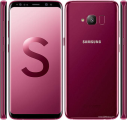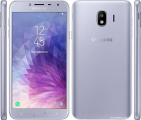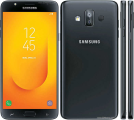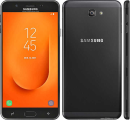
Samsung Galaxy S8 Plus 128 GB Prices
Important Note.
- All prices are in Pakistani Rupee (PKR)
- Prices may vary at stores and our effort will be to provide you with the updated prices.
- Find out WhatMobile price has dropped in Pakistan by selecting Notify Price Drop button
- Find out WhatMobile has better specifications by clicking Add To Compare Button find out what Mobile has better reviews by visiting our reviews section
- Find out WhatMobile is cheaper on which retailer by clicking Compare prices from retailers button
Search Terms
- Samsung Galaxy S8 Plus 128 GB
Specifications
| GENERAL | |
| 2G Network | GSM 850 / 900 / 1800 / 1900 - SIM 1 & SIM 2 (dual-SIM model only) |
|---|---|
| 3G Network | HSDPA |
| 4G Network | LTE |
| Sim | Single SIM (Nano-SIM) or Dual SIM (Nano-SIM, dual stand-by) - Samsung Pay (Visa, MasterCard certified) - IP68 certified - dust proof and water resistant over 1.5 meter and 30 minutes |
| BODY | |
| DISPLAY | |
| Display Size | 6.2 inches |
| Resolution | 1440 x 2560 pixels (~474 ppi pixel density) |
| MultiTouch | Yes |
| Protection | Corning Gorilla Glass 5 - Always-on display - TouchWiz UI |
| SOUND | |
| AlertTypes | Vibration; MP3, WAV ringtones |
| LoudSpeaker | Yes, with stereo speakers |
| 3.5mm jack | Yes - 24-bit/192kHz audio - Active noise cancellation with dedicated mic |
| MEMORY | |
| CardSlot | microSD, up to 256 GB (dedicated slot) - single-SIM model microSD, up to 256 GB (uses SIM 2 slot) - dual-SIM model |
| Internal | 128 GB, 8 GB RAM |
| DATA | |
| GPRS | Yes |
| EDGE | Yes |
| Speed | HSPA, LTE |
| WLAN | Wi-Fi 802.11 a/b/g/n/ac, dual-band, Wi-Fi Direct, hotspot |
| Blue Tooth | v4.2, A2DP, LE, aptX |
| NFC | Yes |
| USB | v3.1, Type-C 1.0 reversible connector |
| CAMERA | |
| Camera Primary | Dual 12 MP, phase detection autofocus, OIS, dual-LED (dual tone) flash |
| Camera Features | Geo-tagging, simultaneous 4K video and 9MP image recording, touch focus, face/smile detection, Auto HDR, panorama |
| CameraVideo | 2160p@60fps, 1080p@120fps, HDR, dual-video rec. |
| CameraSecondary | 8 MP |
| FEATURES | |
| Processor Cores | Octa-Core |
| OS | Android OS, v7.0 |
| CPU | Octa-core (4x2.45 GHz Kryo & 4x1.9 GHz Kryo) |
| Sensors | Iris scanner, fingerprint (front-mounted), accelerometer, gyro, proximity, compass, barometer, heart rate, SpO2 |
| Messaging | SMS(threaded view), MMS, Email, Push Mail, IM |
| Browser | HTML5 |
| Radio | No |
| GPS | Yes, with A-GPS, GLONASS, BDS |
| Java | No |
| Colors | Black, White, Gold, Silver, Pink Gold |
| Others | - Samsung Desktop Experience support - Fast battery charging - Qi/PMA wireless charging (market dependent) - ANT+ support - S-Voice natural language commands and dictation - MP4/DivX/XviD/H.265 player - MP3/WAV/eAAC+/FLAC player - Photo/video editor - Document editor |
| BATTERY | |
| Battery | Non-removable Li-Ion battery |
| MISC | |
Reviews
13/04/2017 - 11:10am
So the Samsung Galaxy S8+ review unit just landed in my lap; naturally I’ll be taking a bit of time to digest this thing over the next week or two in order to deliver a thorough verdict to you, dear reader.
However, I thought it’d also be worth giving an initial impression based on my first fleeting moments unpacking, cradling, and futzing around with the new Samsung flagship.
Samsung Galaxy S8+: Design & Build
Design wise the Galaxy S8+ is a bit of an oddity, being both familiar to me as someone who reviewed the Galaxy S7 EDGE, and yet also giving off a thoroughly alien vibe at the same time.
It’s a sizeable beast, just as tall as the imposing Huawei Mate 9, though noticeably narrower across the frontage. On the subject of thickness it seems to be more or less on a par with Huawei’s phablet; it’s not the thinnest phone on the market but it’s quite skinny enough around the midsection for my taste certainly. For it’s size it’s quite lightweight as well.
I’m not sure where it comes from, but there’s a definite feeling of 2001: A Space Odyssey about this phone despite being as curvy as you like rather than the sharp angles of the iconic Obelisk. Indeed, there isn’t a sharp corner or edge anywhere to be found; it’s as smooth as a Shelby Cobra.
Perhaps it’s the fact that for this particular model, the black coloured one, there isn’t a fraction of a square millimetre of this handset that isn’t as dark as midnight. No silvery metallic accents; nothing of the sort. Just a pitch black abyss. It’s like a stealth bomber. And very sleek it is too. Kind of how you might imagine the phones issued to the CIA could look.
Powering on the display is where things really get interesting, suddenly you see just how much of the device, including the curved edges, is actually screen, and it’s a phenomenally large surface area that illuminates. Between the smooth curved edges blending into the bodywork and Samsung’s motion-sensitive wallpaper background moving in tandem with how you move the phone, it’s sort of like holding some kind of water filled capsule. Again, it feels alien, it looks kind of alive. All very sci-fi.
The minimal physical controls only help this along further. The power and volume keys, as well as the dedicated Bixby button, are the only keys on the device, positioned on the sides and recessed as much as possible so they don’t distract from the phone’s “stealth” appearance. They’re all easily accessible with thumbs and forefingers from either hand, although the feedback isn’t great, it’s a bit clicky and plasticky. Apart from this the Galaxy S8+ feels solid as a rock during operation.
Samsung Galaxy S8+: Display
The screen is gorgeous and exactly what we’ve come to expect from Samsung in recent years; vibrant, punchy colour, pure whites, deep blacks, rich contrast and more brightness than you could ever need. When you crank it up to high levels it even warns you that it might strain your eyes!
It's a 6.2in Super AMOLED setup with a 2960 x 1440 pixel resolution at 529ppi and with a 18:5.9 wide aspect ratio.
Sharpness can be difficult to discern with Samsung’s bubbly new UI, but get a bit of chunky, angular text on screen and you can see that there’s zero artifacting or jaggedness here, it’s smooth, sharp, and clear even when held close to your face. It should work well with VR headsets.
Samsung Galaxy S8+: Hardware & Software
Performance wise I haven’t had a chance to put the Galaxy S8+ through any kind of demanding testing. All I can say is that skipping around the menus and UI, and loading apps, is fast, smooth, and breezy with absolutely no stuttering whatsoever, so it’s looking suitably refined, optimised, and powerful.
The new UI, in terms of my immediate feeling of it, is a bit of a mixed bag for me. On the one hand, I really like the new look which is a lot cleaner than ever before. The settings menu and drop down menus are particularly good, being a block of crisp white with straightforward, no-fuss items and text. Samsung also seems to have gone to lengths to keep these areas uncluttered.
I also like that Samsung has kept the number of additional apps to a bare minimum here. On starting the phone for the first time there’s literally only one page of applications in the app drawer. Very nice indeed. As per usual, however, there’s a lot of faff in the setup stage with Samsung poking you to do things like set up a Samsung account, and so on.
Additionally, I’m not overly fond of some of the changes. Samsung’s done a Huawei in doing away with the app drawer shortcut at the bottom middle of the screen, instead, by default, you have to access it with an upwards swipe on the display. However, you can toggle the app drawer icon back on in the Settings menu.
Samsung Galaxy S8+: Camera
I’ve only had a brief go with the camera, but it’s already massively exceeded my expectations. It's a 12MP setup using an f/1.7 aperture and we see a return of Samsung's great dual-pixel phase-detect autofocus for super fast snapping speeds.
Given the lack of the rumoured dual-camera sensor, I wasn’t expecting a significant change from the Galaxy S7’s camera hardware. But my word, this camera delivers some pretty astounding results regardless.
I’ve taken a couple of snaps and they were all effortless to capture, and the detail and sharpness is just insane, as is the colour accuracy and dynamic range. Check out this sample image I snapped.
Samsung Galaxy S8+: A Promising Start
That’s about all I have to say so far, and indeed it is a case of so far, so good. I’m liking the new design, the display is fantastic, and it looks like Samsung has knocked the camera out the park. I still need to test the performance and battery, and generally see what the phone is like to live with, but I’m fairly optimistic about all this stuff.
Stay tuned for more soon.
Write Your Own Review
My Recent Reviews
- Be first to post review for this product.
comments powered by Disqus













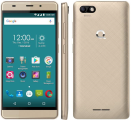
.jpg)
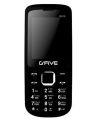

-32-GB.jpg)
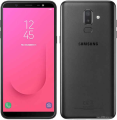
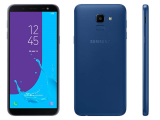
.jpg)
